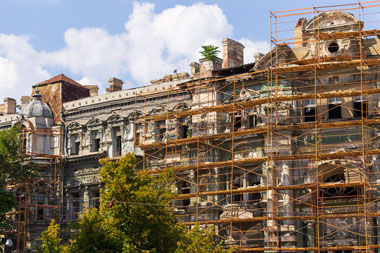Walking through the streets of any historic city, the charm of old buildings often captivates us. These structures, with their unique architecture and historical significance, tell stories of the past. However, historical building restoration poses significant structural challenges that modern restorations do not face. What are these challenges, and how can they be addressed?
The Significance of Restoration
Historic building restoration preserves cultural heritage and architectural beauty. It is key to maintaining the link to our past while providing functional spaces for contemporary use. However, the process involves navigating numerous structural challenges to ensure the buildings remain safe and intact.
Identifying Structural Damage
One of the primary challenges in historic building restoration is identifying existing structural damage. Over time, buildings suffer from wear and tear due to weather, usage, and natural aging. Issues such as foundational settling, cracks in walls, and deteriorating materials are common.
Conducting a thorough structural assessment is the first step in restoration, involving detailed inspections and sometimes non-destructive testing techniques to determine the extent of the damage.
Matching Original Materials
Another significant challenge is sourcing materials that match the original construction. Historical buildings often use materials and construction techniques that are no longer available or widely used. This can make it difficult to find replacements that are both aesthetically and structurally compatible. In many cases, custom materials must be produced, or modern materials must be adapted to match the original appearance and functionality.
Preserving Architectural Integrity
Maintaining the architectural integrity of a historical building while upgrading its structural components is a delicate balance. Restorers must ensure that any modifications or reinforcements do not alter the building’s original design and character. This requires a deep understanding of historical construction methods and a commitment to preserving the authenticity of the structure.
Adapting to Modern Standards
Historic buildings were constructed before modern building codes and standards were established. As a result, bringing these structures up to current safety and accessibility standards without compromising their historical value is a complex task. This often involves integrating modern engineering solutions, such as seismic retrofitting and improved fire safety measures, in a way that remains sympathetic to the original design.
Dealing with Regulatory Requirements
Restoring historical buildings often involves managing a web of regulatory requirements. These can include local, state, and national preservation guidelines, which dictate how restorations should be carried out to preserve the building’s historical significance. Compliance with these regulations can be time-consuming and costly but is essential for ensuring that the restoration is recognized and protected.
Biller Reinhart Engineering Group: Effective Solutions for Structural Issues
At Biller Reinhart Engineering Group, preserving the safety and integrity of your buildings is our top priority. We offer comprehensive restoration & renovation services to address structural issues in various environments. Our team excels in diagnosing problems and implementing effective solutions to extend the lifespan of your property.
Contact Us today at 855-482-7655 or email info@billereinhart.com to discuss your project. Visit our website to learn more about our services and explore our portfolio of successful restorations. Let Biller Reinhart help you maintain and enhance the structural integrity of your buildings.

